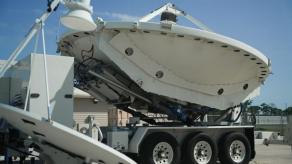The German branch of the defense corporation MBDA has presented a conceptual image of its latest missile project, designated RCM².
This initiative aims to create a hybrid system combining the capabilities of a cruise missile and a drone, positioning it as a unique counterpart to Palianytsia. However, specific timelines for its implementation have not been disclosed. According to a publication by The War Zone, the project is likely to reach full development by the 2030s.
Read more: More Countries Join the Danish Model: Lithuania and Sweden Will Finance Production of Ukraine's Palianytsia Drones

The publication explains that RCM² stands for Remote Carrier Multidomain Multirole Effector. Its first public presentation occurred during the ILA aerospace exhibition held in Berlin in the summer of 2024.
The RCM² is planned to have a fuselage length of 3.96 meters, a launch weight of 340 kilograms (excluding a booster), and an estimated flight range of 500 kilometers.
The drone-missile is expected to feature operator-controlled flight, potentially managed by one or multiple operators through a "chain" of command. Its modular design will allow it to be equipped either with an explosive warhead or a compartment designed for reconnaissance or electronic warfare systems.

Beyond operator control, the RCM² is expected to include a combined navigation system with TERCOM, GPS navigation sensors, inertial guidance systems, and an infrared seeker. It is anticipated to loiter in designated areas to engage moving targets effectively.
The RCM² is also designed for compatibility with multiple platforms, including the A400M transport aircraft, Mk 41 vertical launch systems on German Navy ships, and the M270 MLRS.
Despite its promise, two critical aspects remain uncertain. First, the project’s timeline is described only vaguely, with completion expected "earlier than the FEANIX project by Diehl Defense," which is slated for the 2040s.

In simpler terms, the RCM²’s development is expected to span several years, with completion anticipated in the 2030s. However, given the ongoing threat from russia, such weaponry is urgently needed to address current challenges.
The second unresolved issue is the projected "effectiveness-to-cost" ratio for the RCM².
Previously, Defense Express reported that the United Kingdom has initiated the development of its own version of Palianytsia under the Brakestop project, focusing on creating long-range, cost-effective, and mass-producible weaponry.
Read more: Lithuania Invests €10 Million in Ukraine's Palianytsia Rocket Drone Production














